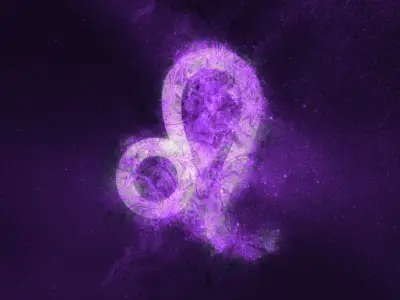In a world that is beginning to recognise the importance of holistic health and wellness, Reiki stands out as a powerful and effective energy healing method. Reiki is more than a healing technique; it's an ancient philosophy connecting humans with universal energy. In this article, we'll explore why Reiki is energy therapy, how it heals the mind and body, and the different levels of attunement.
Jump to:
Understanding Reiki as an Energy Therapy
Energy therapy is based on the principle that we are much more than our physical bodies. Rather than primarily focusing on physical health, energy therapies such as Reiki consider each individual's emotional, mental, and spiritual needs. Before diving into energy therapy's benefits, let's cover the basics.
What is Reiki?
Reiki, a Japanese word meaning "universal life energy," is a gentle yet powerful form of energy healing. A reiki practitioner channels energy through their hands to the recipient, promoting balance, calm, and well-being.
By learning how to move energy and direct it towards specific energetic systems, Reiki practitioners can promote balance within themselves and others. Reiki is non-evasive, light, and relaxing, making it a popular holistic treatment.
Where does Reiki originate from?
Reiki has its roots in early 20th-century Japan, founded by Mikao Usui after a spiritual awakening on Mount Kurama. During a 21-day meditation and fasting period, Usui experienced an amazing breakthrough that led to the development of Reiki as a form of energy healing.
Usui combined his newfound knowledge with traditional Japanese therapies, Buddhism, and other spiritual practices. The result was forming a new energy healing method aimed at promoting spiritual growth, self-improvement, and holistic well-being.
The technique spread quickly throughout Japan and later to the rest of the world, evolving into various branches. Practising Reiki on yourself, others, and even animals is possible.
The basic principles of Reiki
Although Reiki as a healing method now includes many interpretations, most branches include the following principles:
1. Connection to universal life force energy: Reiki is founded on the belief that universal life force energy flows through all living beings. Practitioners become attuned to this energy, allowing them to channel it through their hands. This energy isn't religious but a natural aspect of life. By aligning with this energy, Reiki promotes healing, balance, and wellness in the recipient.
2. Five Reiki principles for living: Reiki includes a set of five guiding principles that each practitioner should live by. These are:
- Just for today, do not anger.
- Just for today, do not worry.
- Just for today, be grateful.
- Just for today, do your work honestly.
- Just for today, be kind to every living thing.
These principles serve as daily affirmations and ethical guidelines promoting harmonious living.
3. Self-Healing and Healing Others: Reiki is unique in that it enables both self-healing and the healing of others. Practitioners learn to perform Reiki on themselves, fostering personal growth and self-awareness, but they can also use Reiki to assist others, whether friends, family, or clients. This dual focus on self and others is vital to Reiki's approach to holistic healing and care.
What does a reiki experience involve?
Reiki is an uncomplicated energy therapy that is simple to give and receive. A Reiki practitioner will invite the recipient to get comfortable, usually lying down or reclining in a chair. You'll be asked to take a few breaths to calm the mind and body and are often advised to close your eyes.
The practice involves channelling energy through the hands to various body parts as the person receiving the treatment relaxes. The practitioner usually holds their hands a few inches away from the body and won't directly place them upon you. As the recipient, there is nothing for you to do apart from switch off, relax, and unwind.
Whether you are present throughout the session or not, you'll still receive the benefits of energy therapy.
Benefits of Reiki
Those who receive Reiki treatment report a boost in overall health and leave the treatment feeling calm and relaxed. It's important to note that scientific evidence has yet to confirm these benefits, but this doesn't discount the self-reported benefits that many people experience.
Physically, some clients notice reduced pain, accelerated healing, and improved symptoms of chronic conditions. Some people experience a reduction in headaches and insomnia.
Emotionally, Reiki often encourages a sense of peace and tranquillity, reducing stress and anxiety. People also report a reduction in fatigue and exhaustion.
Mentally, it can enhance clarity and focus, aiding in overcoming challenges and fostering personal growth. It may also be an effective mood booster, promoting a positive mindset.
Spiritually, Reiki can individuals to a deeper sense of purpose and alignment, often leading to a profound sense of connection and fulfilment.
Whether utilised as a complementary therapy to conventional medicine or as a standalone wellness practice, Reiki's non-invasive approach provides a nurturing path to well-being and self-discovery.
Different Levels of Reiki Attunement
Reiki is unique as a form of energy therapy as it offers the aspiring practitioner the chance to progress in their healing journey. Here are the reiki levels and what it means to master each one.
Level 1: The Novice Stage
Reiki Level 1 is the self-healing stage and the starting point for anyone interested in learning more about Reiki.
At this foundational level, individuals are introduced to the basic principles and techniques of Reiki, including hand positions and how to sense energy. The focus is self-healing, enabling practitioners to attune to their energy and learn how to channel it for personal well-being.
At each level, the recipient receives an attunement process which a Reiki Master conducts. At this level, you'll receive an attunement that opens you up to the flow of Reiki energy and allows you to become introduced to working with the universal energy flow.
This level is an excellent starting point for those interested in learning more about Reiki and for those curious about the practitioner route.
Level 2: The Practitioner Stage
Reiki Level 2 is the practitioner stage and marks a significant step forward in a Reiki student's journey.
At this level, practitioners are taught specific techniques that enhance their ability to channel Reiki energy and learn techniques for distant or remote healing, which becomes possible as practitioners become more advanced.
This expansion of skills allows them to offer Reiki to others, including friends, family, and even clients, if they choose to practice professionally.
Progressing to the practitioner stage represents a deepening of knowledge and understanding, transitioning from self-healing to positively impacting the lives of others.
Our Reiki Level 1 and 2 Diploma Course is the ideal starting point for those wishing to learn Reiki to benefit themselves and others.
Level 3: The Master Practitioner
Reiki Level 3 is known as the master healer stage and a level that all practitioners consider an important achievement.
At this stage, individuals acquire a deeper understanding of Reiki's spiritual aspects, allowing them to work with energy at a more advanced level. Level 3 often involves a greater emphasis on meditation and inner work, enhancing one's intuitive abilities.
Reiki Level 3 practitioners often find their speciality or area of interest in energy healing and may build a reputation within the Reiki community.
Becoming a Master Healer means embracing service, wisdom, and continuous spiritual growth. Those at this level must take their self-growth seriously to be the best practitioner possible.
Level 4: The Master Teacher Stage
Reiki Level 4 is the master teacher level and is the pinnacle of a Reiki practitioner's training, representing a profound commitment to this form of energy healing.
At this level, practitioners are not only skilled in practising Reiki at the master level but are also trained to attune others to Reiki energy. This means they can pass on the knowledge and abilities necessary for others to practice Reiki.
Becoming a Reiki Master Teacher is often seen as a calling to lead, mentor, and serve the holistic health community, ensuring that the healing potential of Reiki continues to flourish.
It can take years to reach this level, and aspiring level 4 practitioners must undergo rigorous training and personal development before considering this stage.
Varieties of Reiki Healing
Like any wellness practice, Reiki has evolved to include a variety of different techniques, all offering their unique benefits. Here are some of the most popular varieties:
Reiki Crystal Healing
This form of Reiki involves combining deep energy healing with the power of crystals. A Reiki crystal healing practitioner often enhances the flow of universal life force energy with the help of positively charged crystals in order to promote greater well-being.
This energy therapy is ideal for those who already work with crystals and use them as part of their wellness practice. Our Crystal Reiki Diploma Course is an excellent starting point for those wishing to expand their knowledge of this healing technique.
Reiki Chakra Healing
This variation of Reiki blends the ancient philosophy of chakra healing with the modern practice of Reiki. By working with two energy systems, those receiving the treatment can benefit from a deep energy cleanse, restoring balance to all aspects of health.
Reiki chakra healing is gaining popularity in recent years due to its effectiveness. If you feel drawn to this healing modality, our Chakra and Aura Healing Diploma Course will facilitate you to become an expert in this field.
Reiki Angel Healing
Combining Reiki with angelic healing is one of the most recent adaptations within energy therapy. Practitioners call upon the angelic realm and various archangels to assist in Reiki.
This form of energy healing is most suitable for those with a deep connection to spiritual realms and those that believe in the power of angels. Our Angel Reiki Diploma Course provides the knowledge and skills to direct energy transferred through us from the archangels to administer healing, clearing energy bodies with powerful angelic light.
Reiki as Energy Therapy, Healing, and Attunement: A Summary
Reiki is a gentle yet effective energy therapy that focuses on a holistic approach to health, well-being, and healing. There are many reported benefits to receiving Reiki, and its non-evasive approach makes it suitable for most people.
There are four Reiki levels ranging from the novice stage to the master practitioner stage, and each level requires you to receive a Reiki attunement from an advanced practitioner. Whether you want to learn more about Reiki for your benefit or the benefit of others, it's important to educate yourself to a high standard to honour this practice.
Begin your Reiki journey today by enrolling in our Reiki 1 & 2 Diploma Course for just £29 (saving £98!). Open yourself up to the profound benefits of this practice, helping yourself and others in the process.





